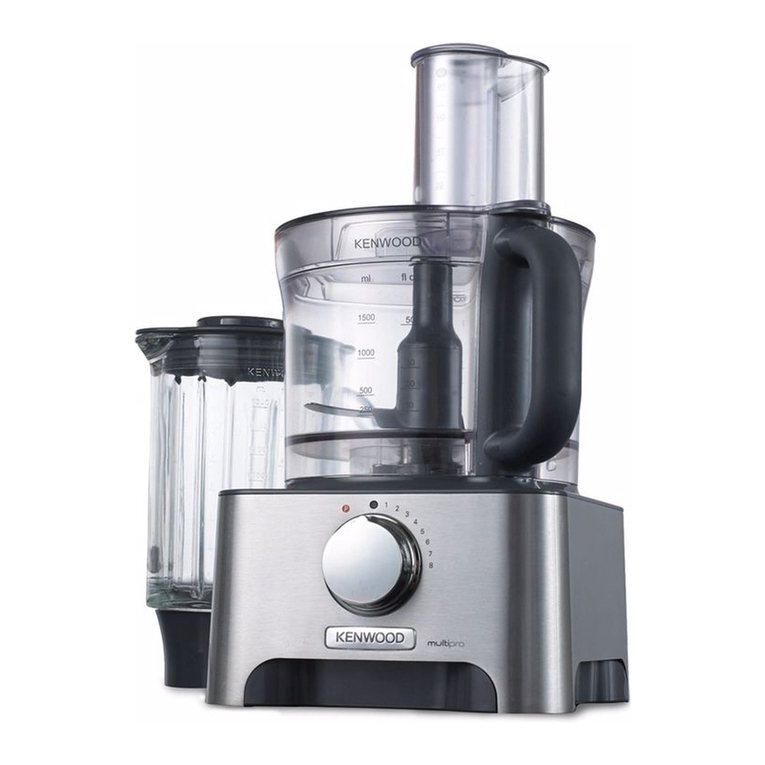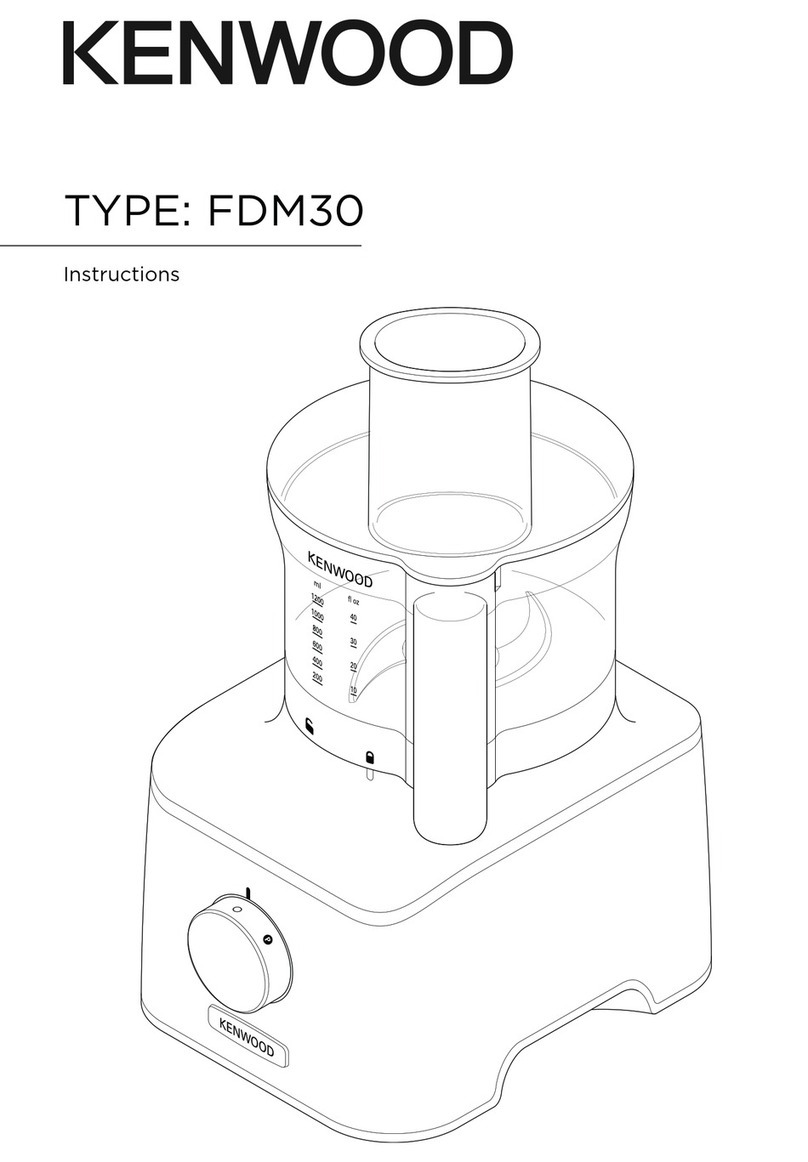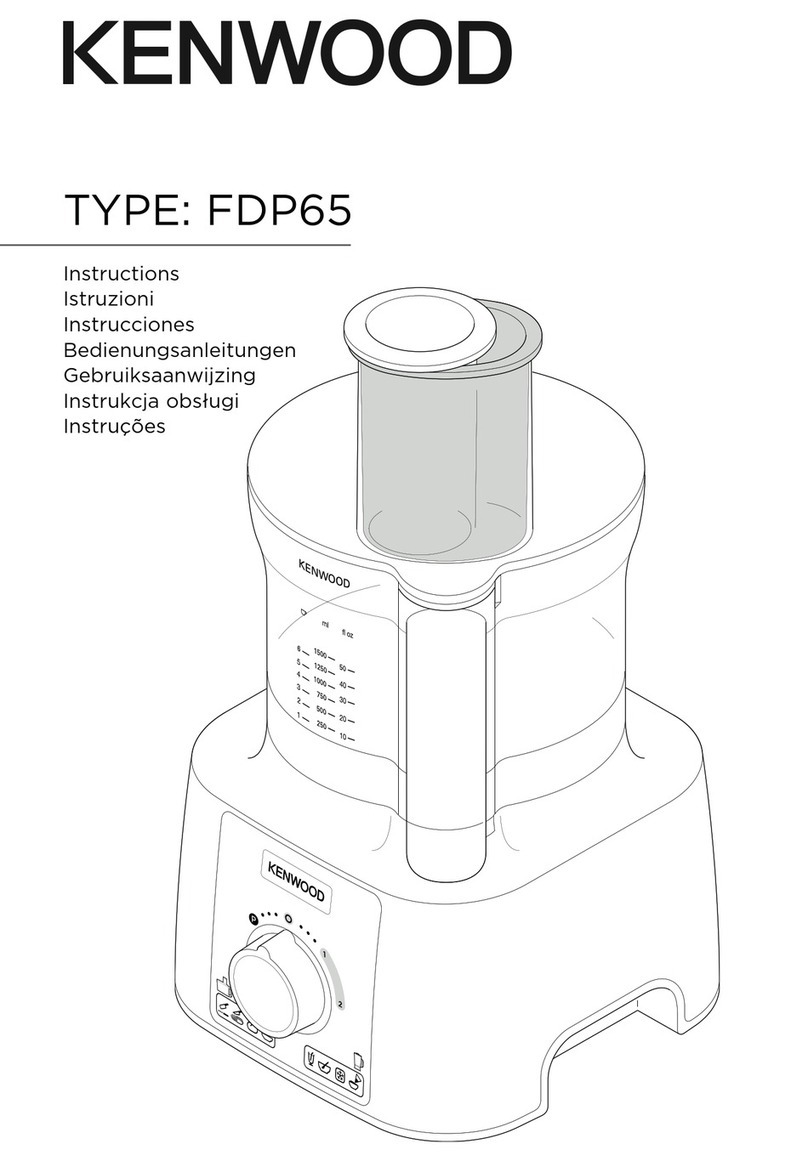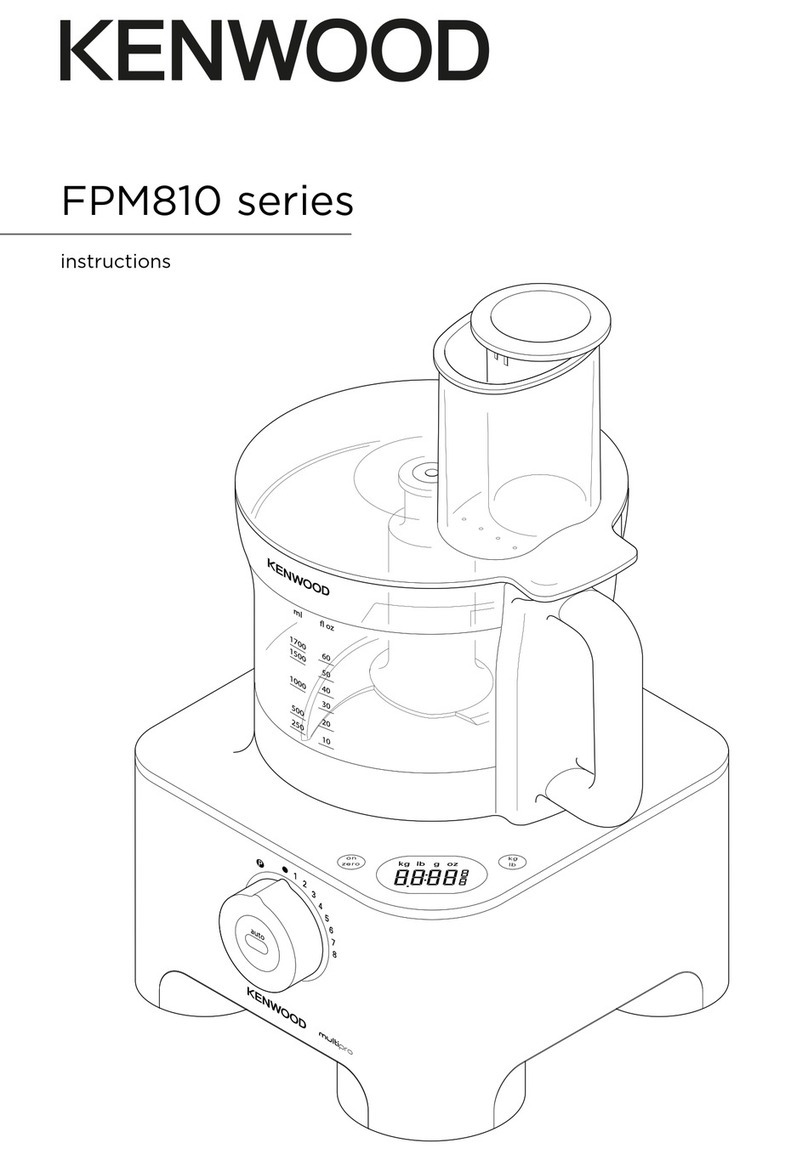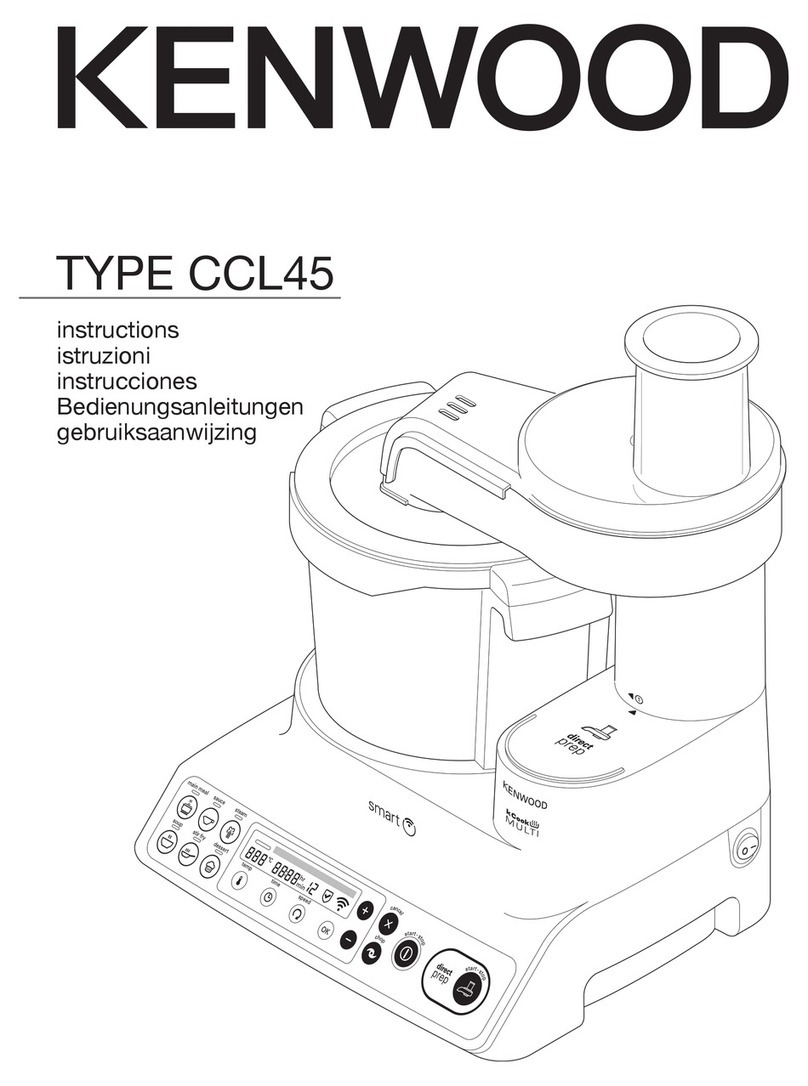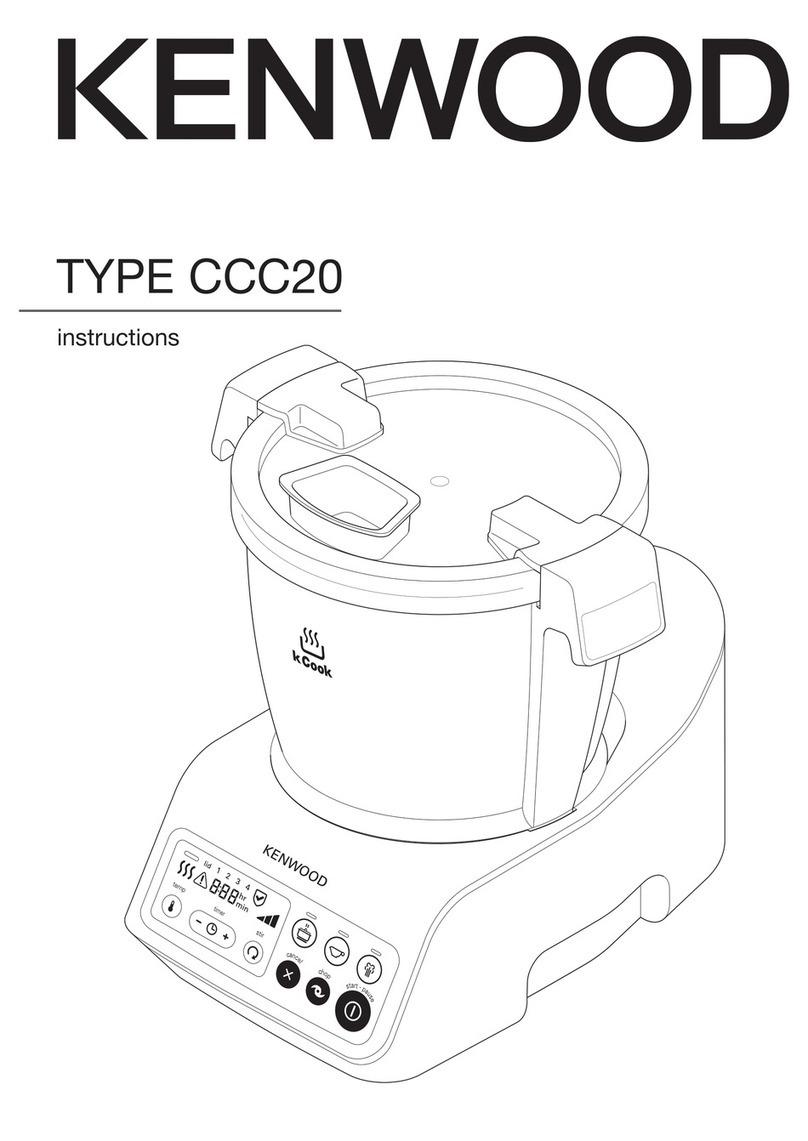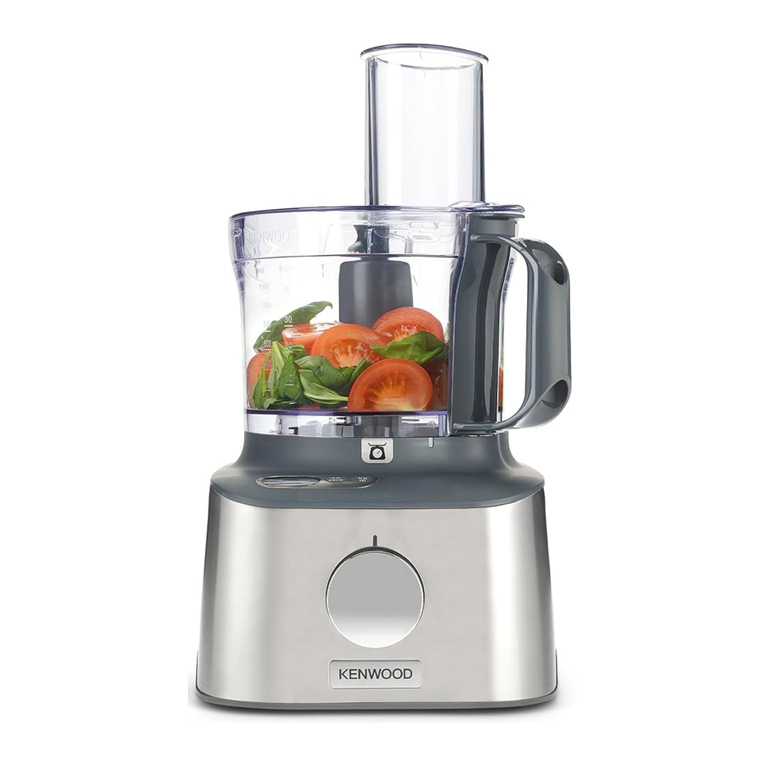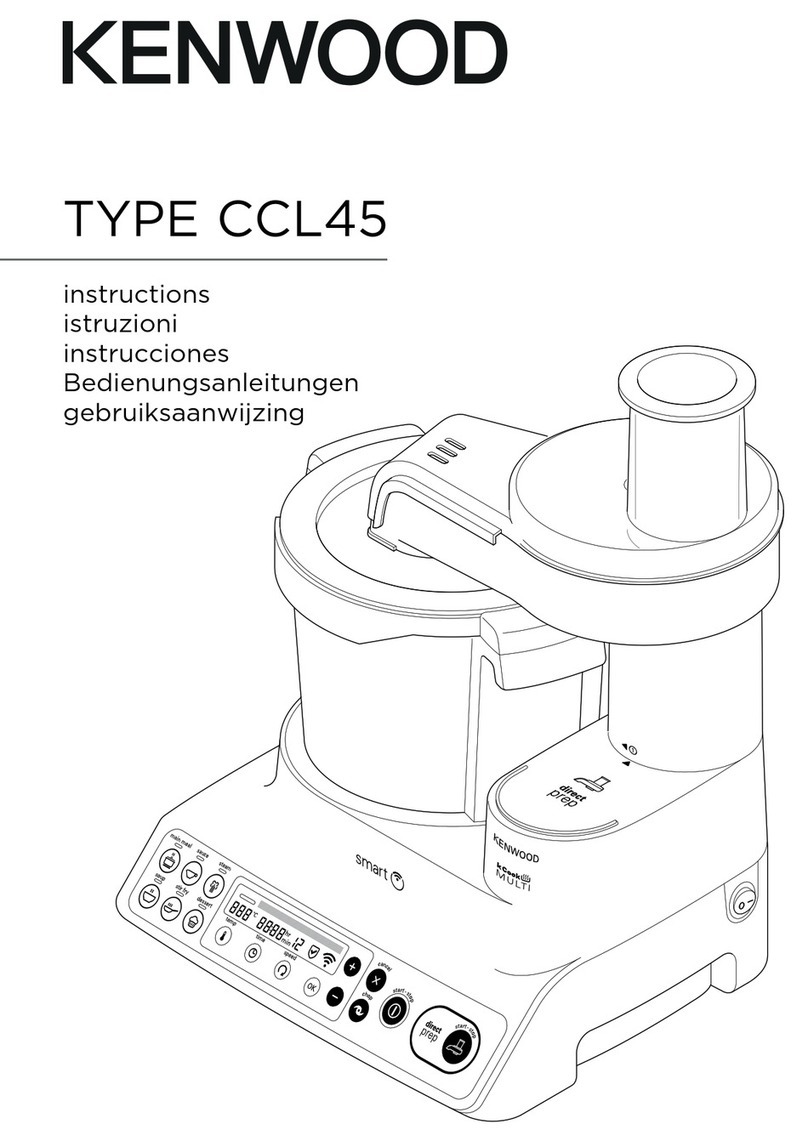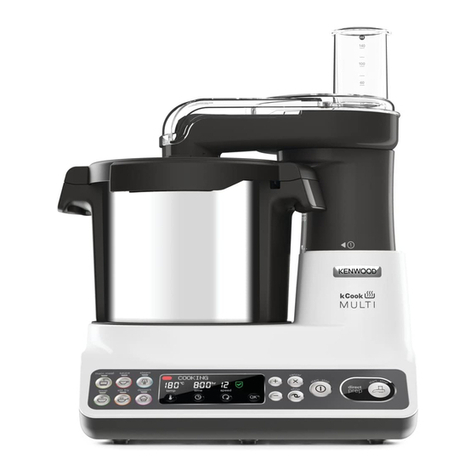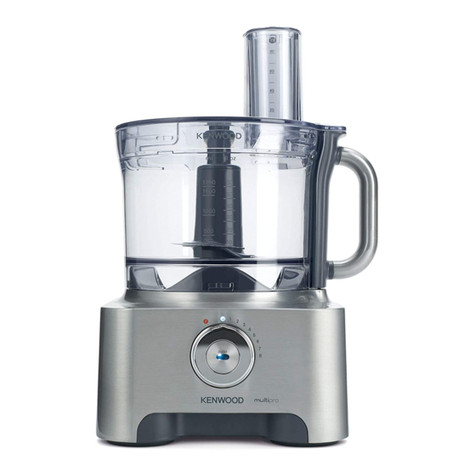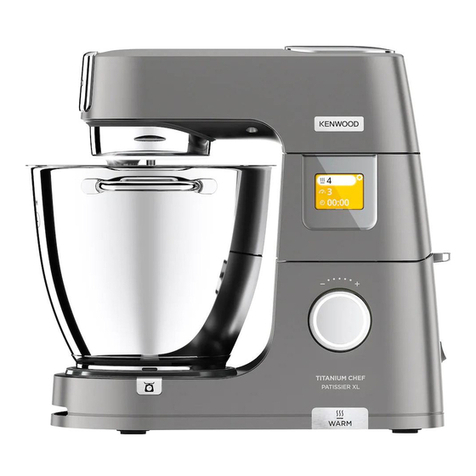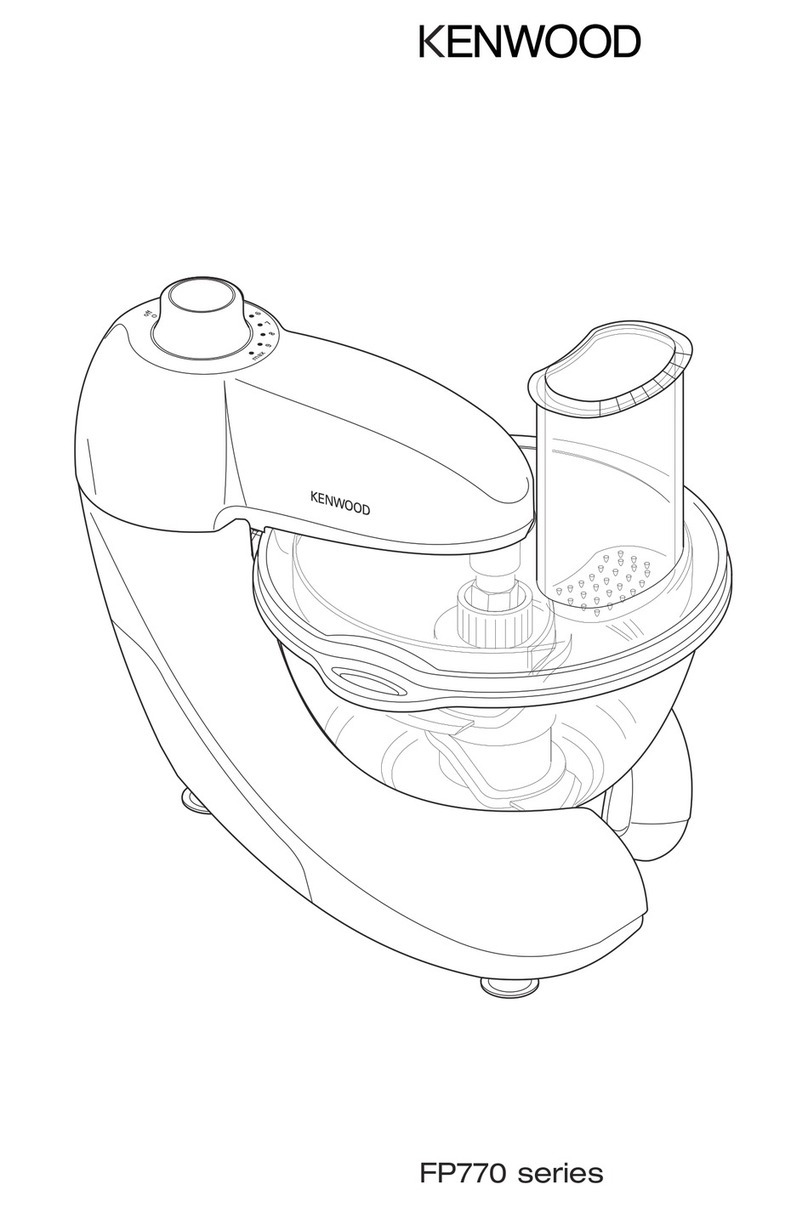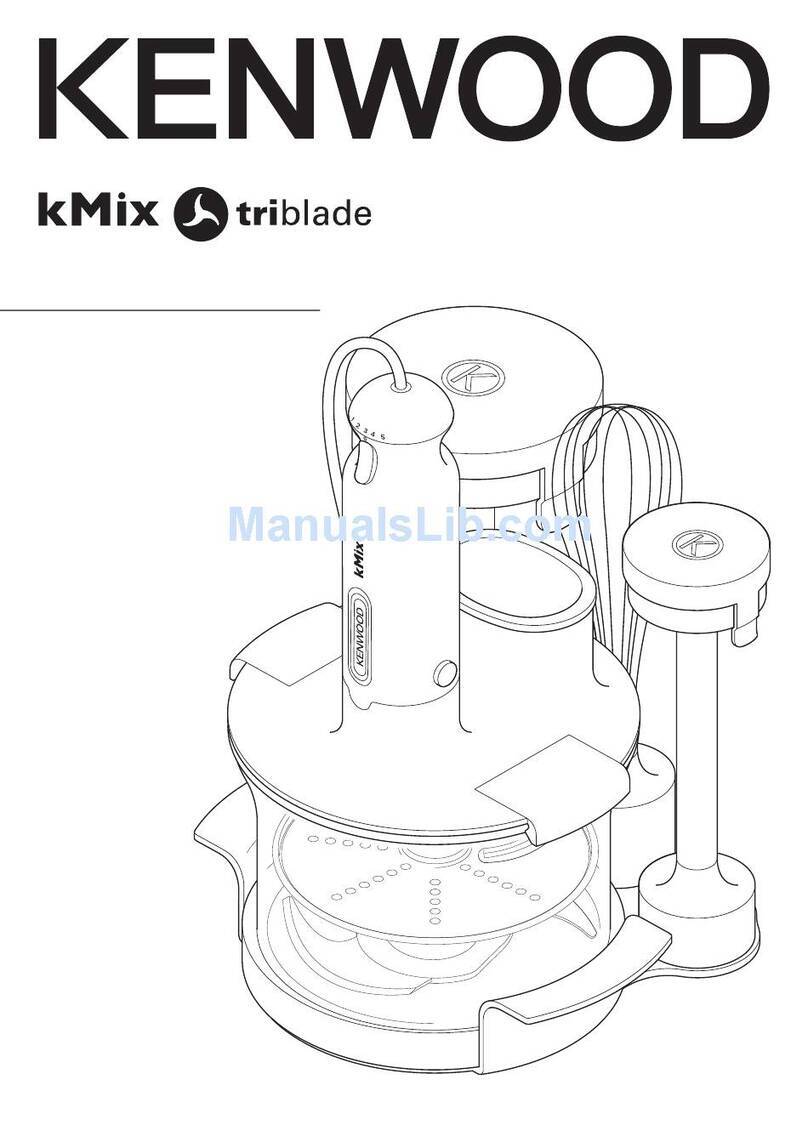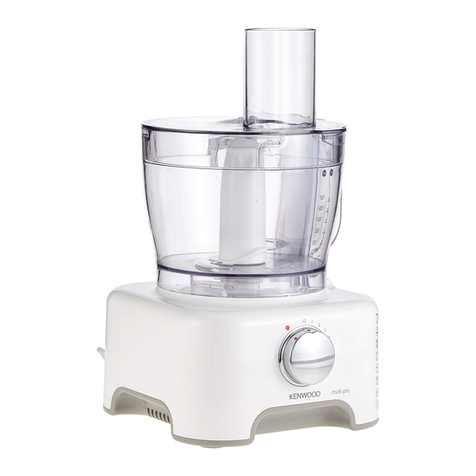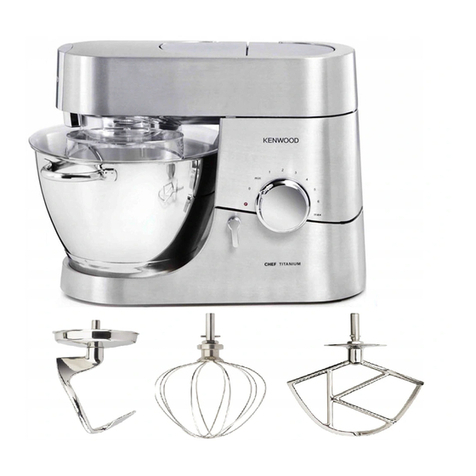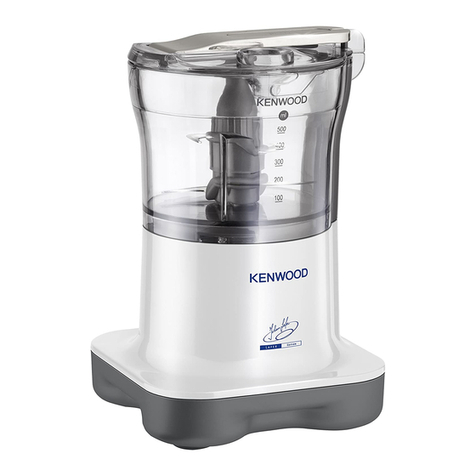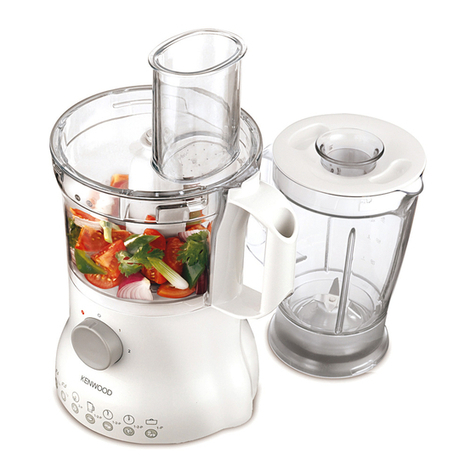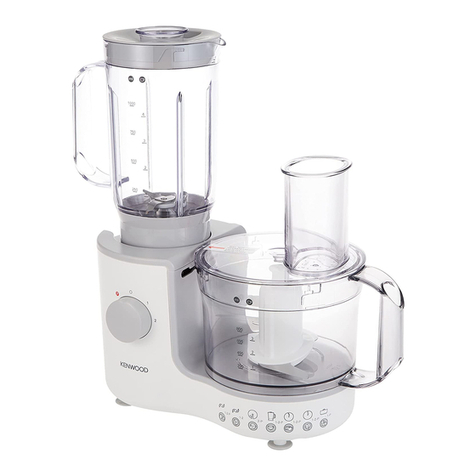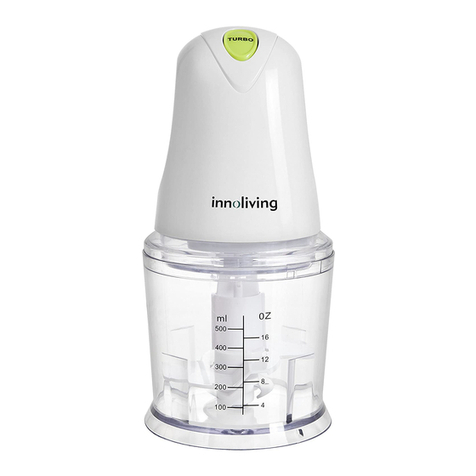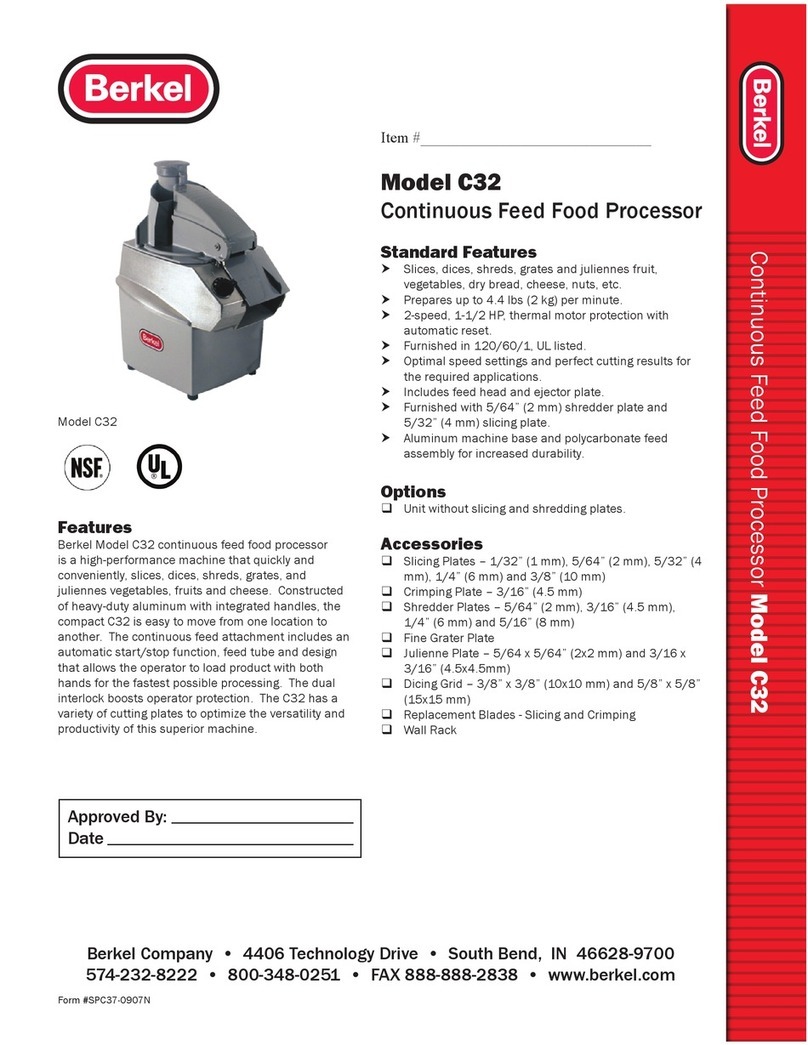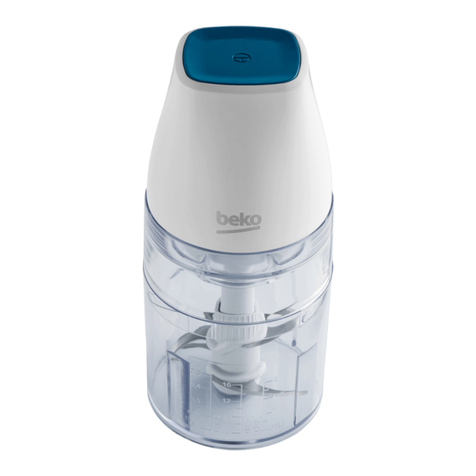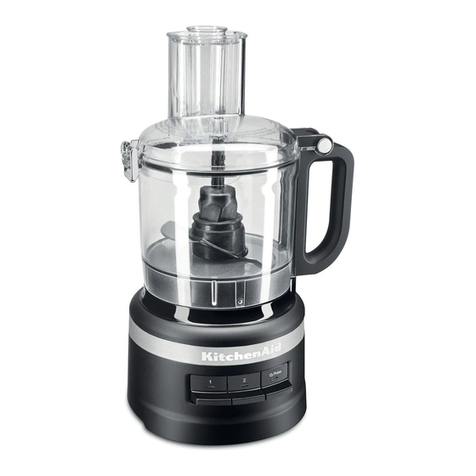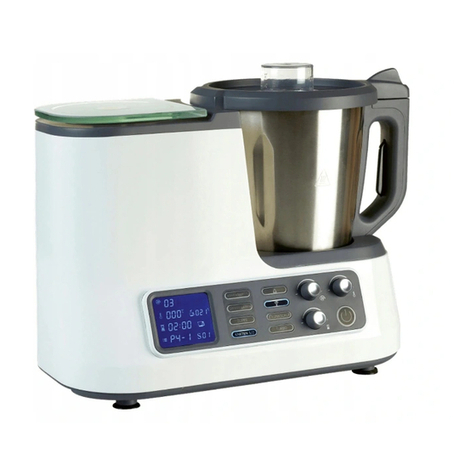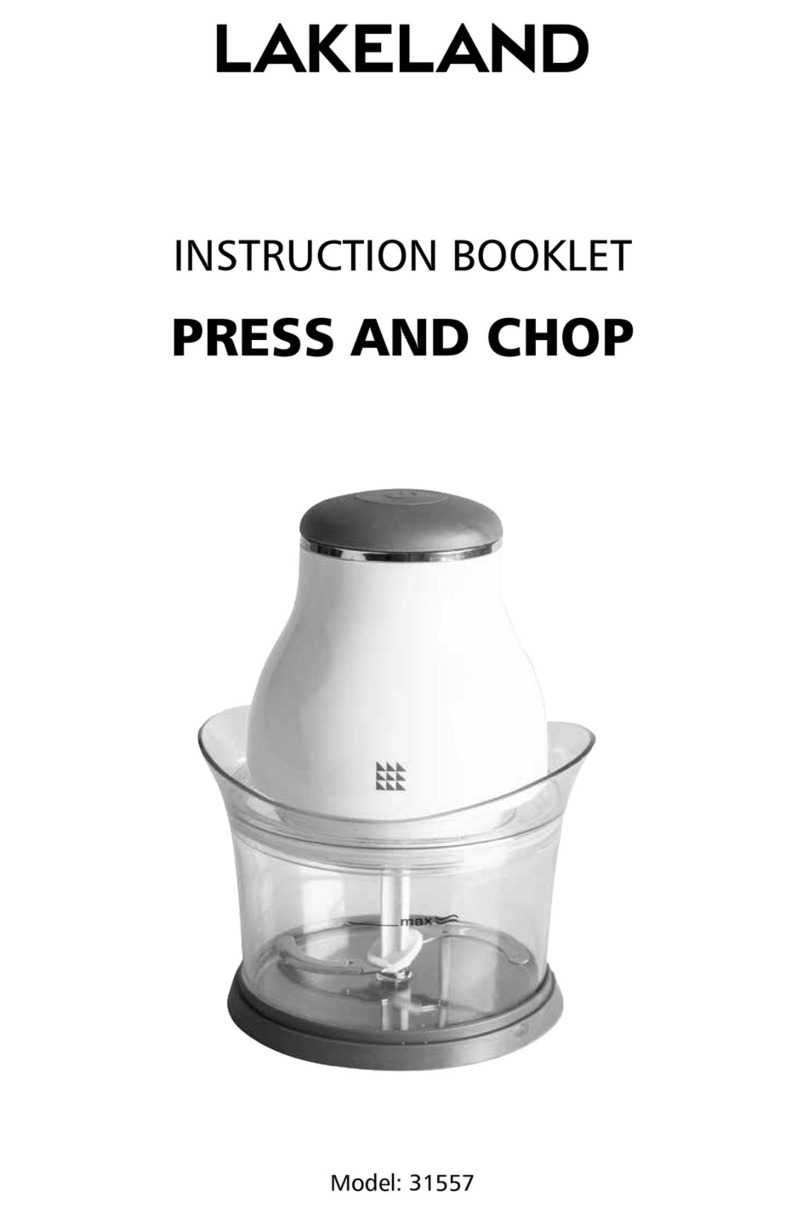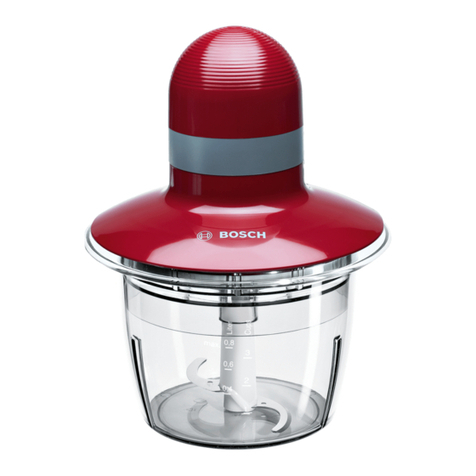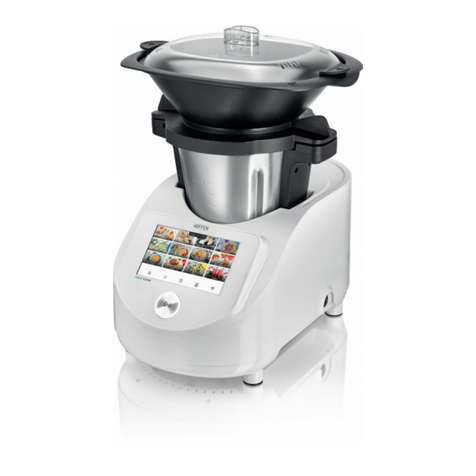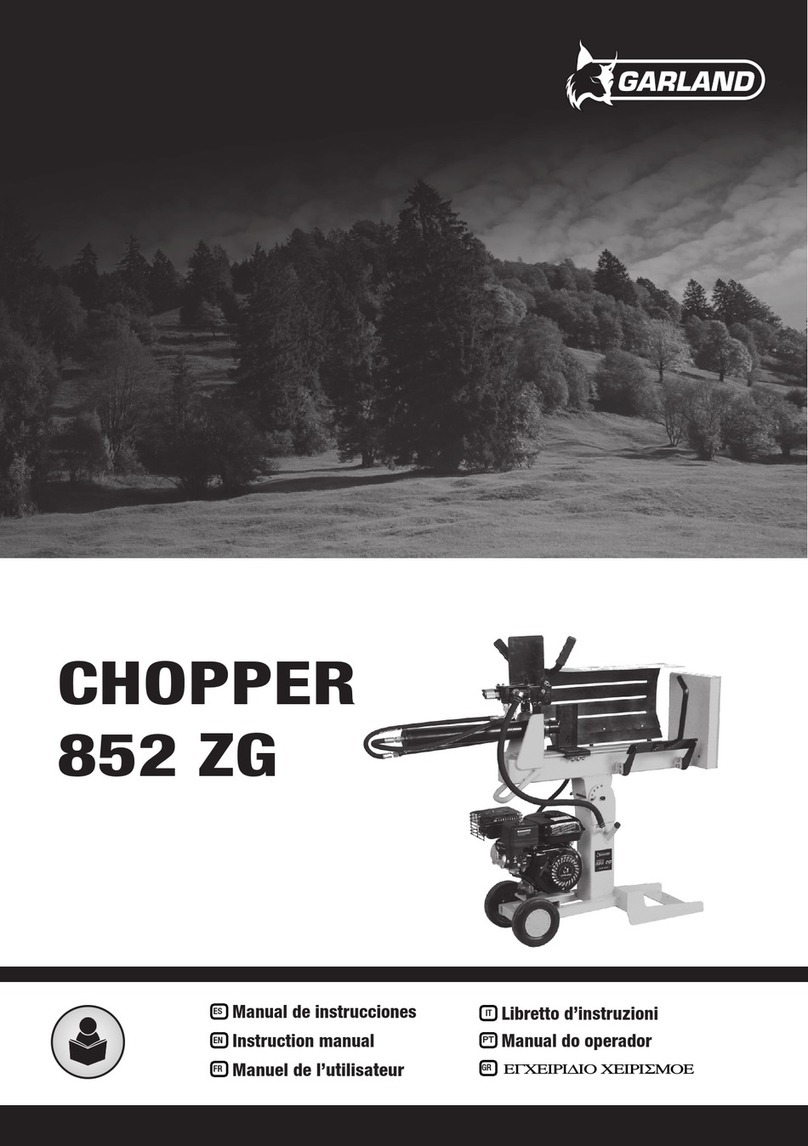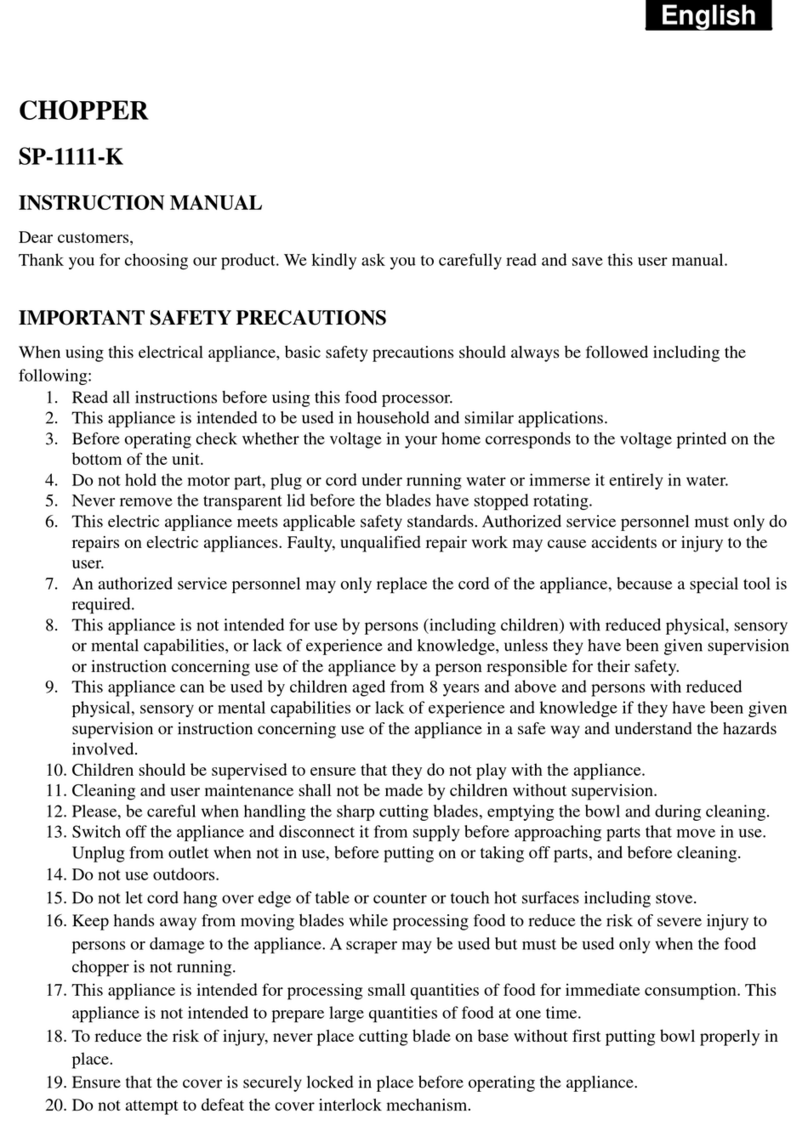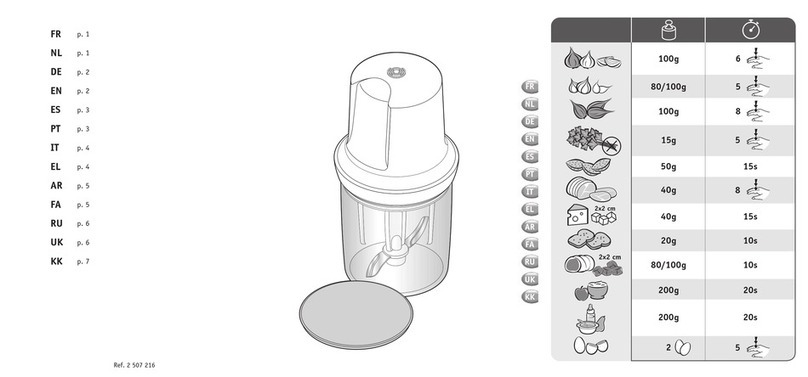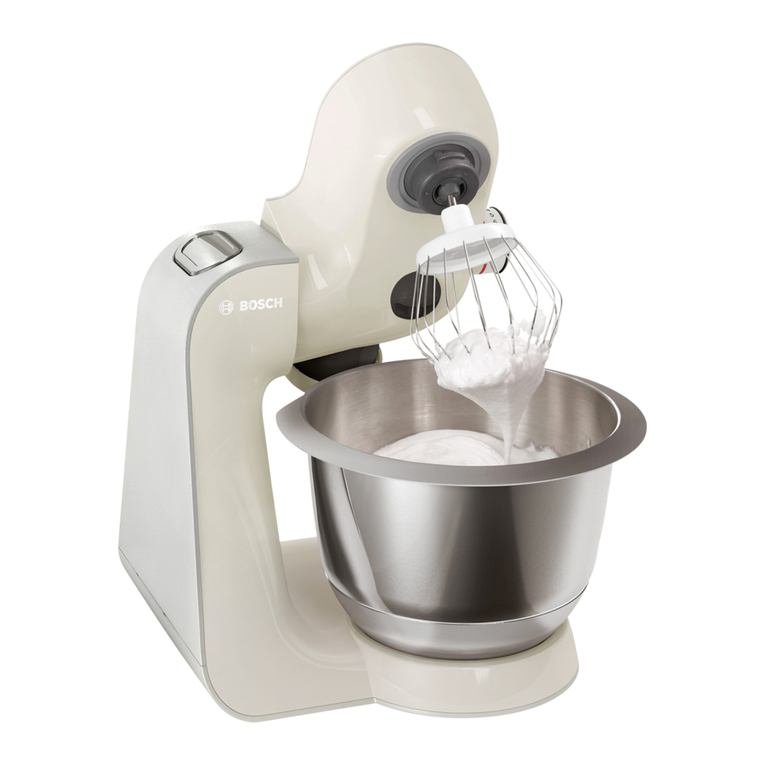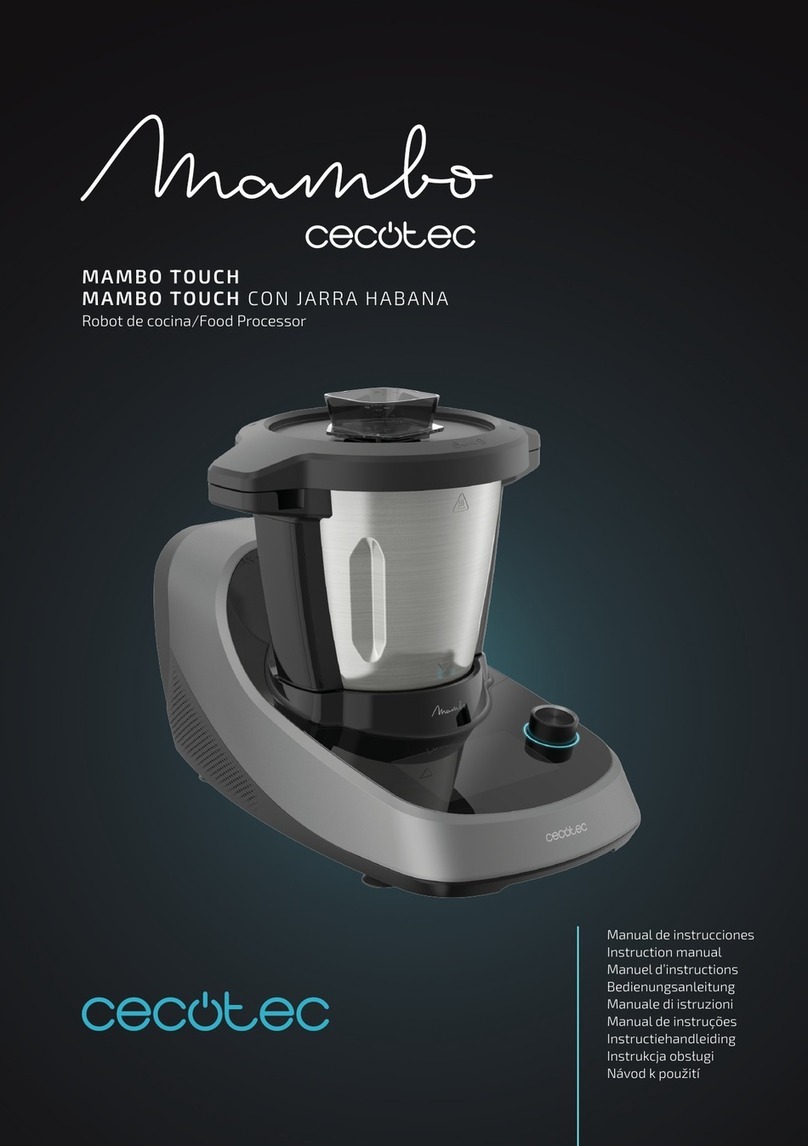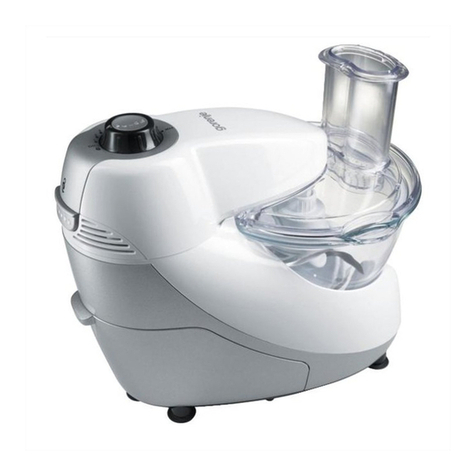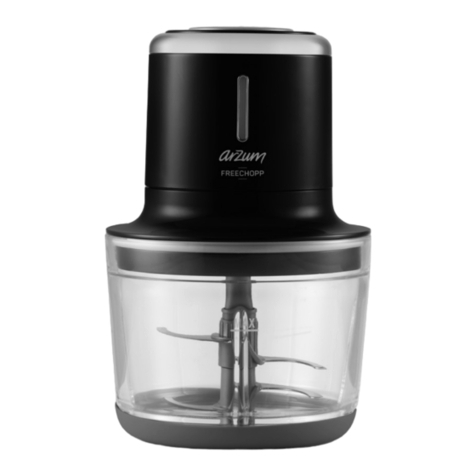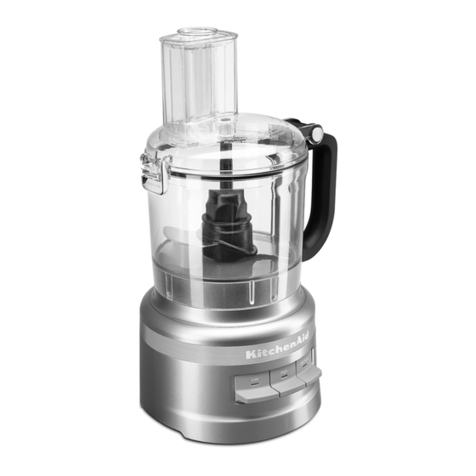attachments
Not all of the attachments listed below may be included with your
food processor. Attachments are dependent upon the model
variant.
knife blade
dough tool
twin beater geared metal whisk
thick slicing/coarse grating disc
thin slicing/fine grating disc
rasping/parmesan disc (if supplied)
citrus juicer (if supplied)
centrifugal juicer (if supplied)
spatula (if supplied)
recipe book (if supplied)
to use your food processor
1 Fit the bowl by aligning the on the bowl with the on the
power unit, turn clockwise until it locks .
2 Fit an attachment over the bowl drive shaft.
Note: Detachable drive sha t should only be itted
when using the discs, citrus juicer or twin beater
geared whisk.
●Always fit the bowl and attachment onto the processor before
adding ingredients.
3 Fit the lid - ensuring the top of the drive shaft/tool locates into
the centre of the lid.
●Do not use the lid to operate the processor, always
use the on/o speed control.
4 Plug in, switch on and select a speed. (Refer to the
recommended speed chart).
●The processor will not operate i the bowl or lid are
not itted correctly into the interlock. Check that the
eed tube and bowl handle are situated to the right
hand side.
●Use the pulse (P) for short bursts. The pulse will operate for as
long as the control is held in position.
5 Reverse the above procedure to remove the lid, attachments and
bowl.
●Always switch o and unplug be ore removing the lid.
important
●Your processor is not suitable for crushing or grinding coffee
beans, or converting granulated sugar to caster sugar.
●When adding almond essence or flavouring to mixtures avoid
contact with the plastic as this may result in permanent marking.
to use your liquidiser
1 Fit the sealing ring into the blade unit - ensuring the seal is
located correctly in the grooved area.
●Leaking will occur i the seal is damaged or
incorrectly itted.
2 Screw the goblet onto the blade assembly . Refer to the
graphics on the underside of the blade unit as follows:
- unlocked position
- locked position
The liquidiser will not operate i incorrectly
assembled.
3 Put your ingredients into the goblet.
4 Fit the lid to the goblet and push down to secure . Fit the
filler cap.
5 Place the liquidiser onto the power unit, align the on the
liquidiser with the on the power unit and turn
clockwise to lock .
●The appliance will not operate i the liquidiser is
incorrectly itted to the interlock.
6Select a speed (refer to the recommended speed chart) or use
the pulse control.
sa ety
●Liquids should be allowed to cool to room
temperature be ore blending.
●Always take care when handling the blade assembly and avoid
touching the cutting edge of the blades when cleaning.
●Only operate the liquidiser with the lid in place.
●Only use the goblet with the blade assembly supplied.
●Never run the liquidiser empty.
●To ensure the long life of your liquidiser, do not run it for longer
than 60 seconds.
●Smoothie recipes - never blend frozen ingredients that have
formed a solid mass during freezing, break it up before adding to
the goblet.
hints
●When making mayonnaise, put all the ingredients, except the oil,
into the liquidiser. Remove the filler cap. Then, with the appliance
running, add the oil slowly through the hole in the lid.
●Thick mixtures, e.g. pât s and dips, may need scraping down. If
the mixture is difficult to process, add more liquid.
●Ice crushing - operate the pulse in short bursts until crushed to the
desired consistency.
●The processing of spices is not recommended as they may
damage the plastic parts.
●The appliance will not work if the liquidiser is incorrectly fitted.
●To blend dry ingredients - cut into pieces, remove the filler cap,
then with the appliance running, drop the pieces down one by
one. Keep your hand over the opening. For best results empty
regularly.
●Don’t use the liquidiser as a storage container. Keep it empty
before and after use.
●Never blend more than 1.2 litres - less for frothy liquids like
milkshakes.
3
